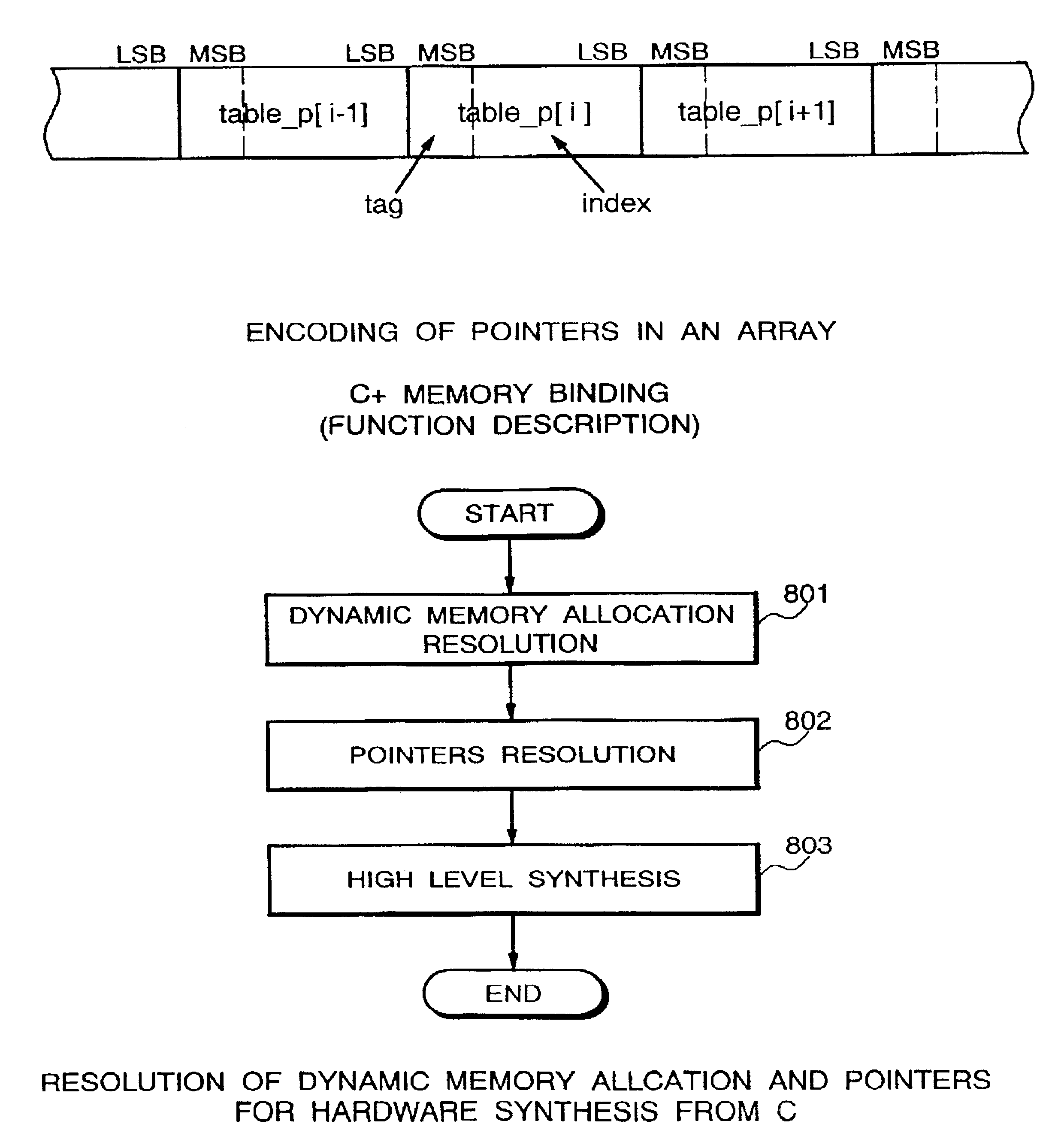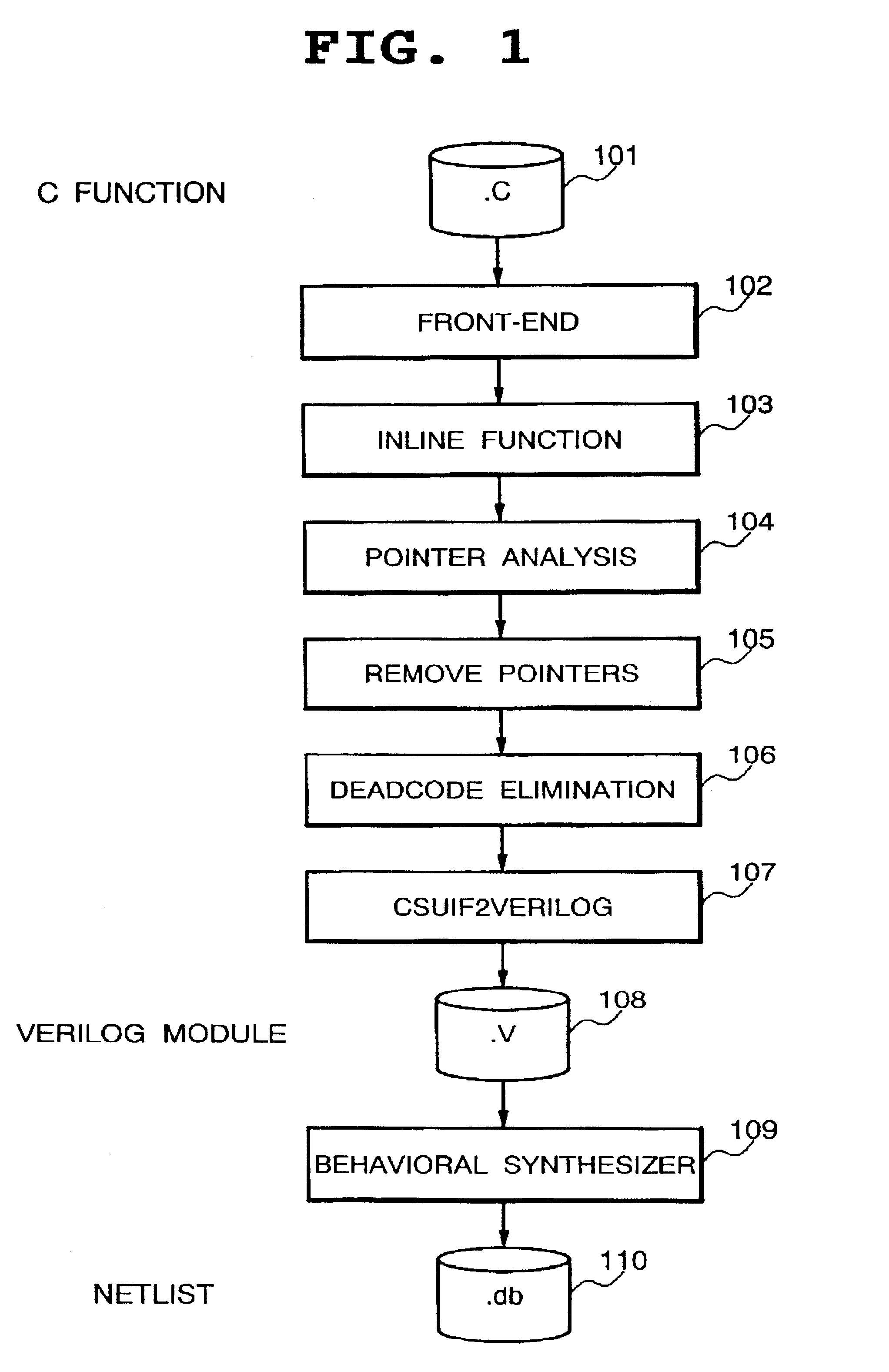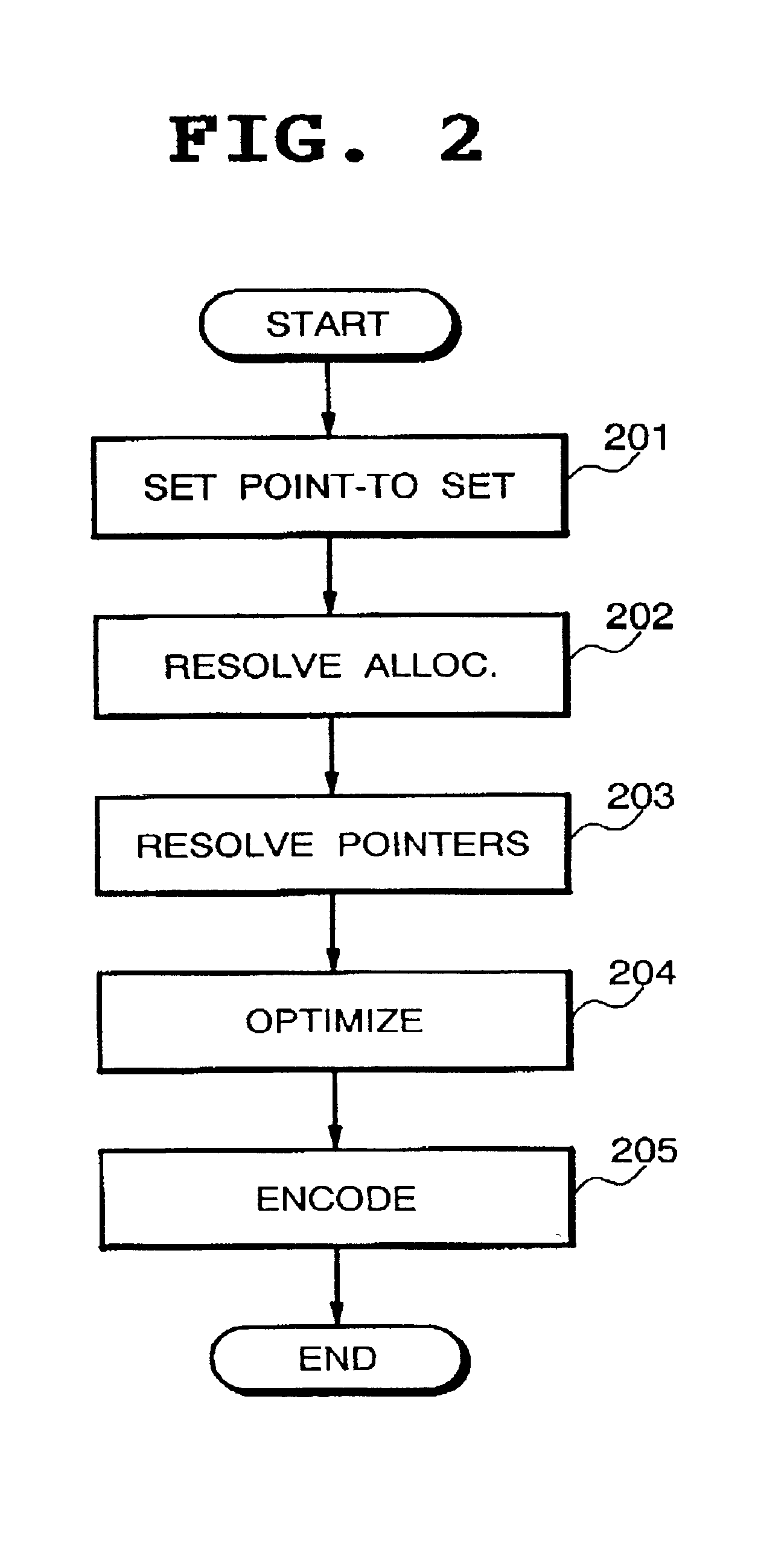Resolution of dynamic memory allocation/deallocation and pointers
a dynamic memory allocation and pointer technology, applied in the field of dynamic memory allocation/deallocation and pointers, can solve the problems of not supporting dynamic memory allocation/deallocation, memory bandwidth is often a bottleneck, and tasks are particularly difficul
- Summary
- Abstract
- Description
- Claims
- Application Information
AI Technical Summary
Problems solved by technology
Method used
Image
Examples
example 2
Consider the array r.F[ ] nested in a structure r: struct {
char a;
char b;
int F[8];} r;
References to one of the array element (e.g. r.F[2]) are represented approximately by the locations set which regroups all of the elements of the array as well as r.a.
Dynamically allocated memory locations (heap-allocated objects) are represented by a specific location set. As far as accuracy, the goal is to distinguish complete data structures. The different elements of a recursive data structure would typically be combined. For example, this inventors want to distinguish one list from another hut this inventors do not want to distinguish the different elements of a list. Heuristics are used to partition the heap. Storage allocated in the same context is assumed to be part of the same equivalence class. These heuristics have been proven to work well as long as the program uses the standard memory allocation routines (Robert Wilson, "Efficient, Context-Sensitive Pointer Analysis For C Programs", Ph...
example 3
FIG. 4 gives an illustration of pointers' encoding inside of an array:
int *table_p[];
If the element table_p[i] were to point to s[2].b defined on FIG. 3, index table_p[i].index would be equal to 2.
The index part of the code is stored within the first bits (least significant bits) to support pointer arithmetic, especially when a pointer is type-cast into an integer. This encoding scheme has limitations on the number of location sets in the points-to set and on the number of elements addressable within each location set. For example, if this inventors allocate 8 bits for the tag and 8 bits for the index. The pointer can reference at most 256 location sets and the index can grave at most 256 values (e.g. from -127 to 128). These limitations should hardly be a problem in most designs.
example 4
Consider the expression (*(q+1)=*p+1), in which pointer p points to variables a and b and pointer q points to an element of array table. The value of p is encoded. Its tag p.tag is defined as follows: the value 0 is associated with variable a and the value 1 is associated with variable b. Since pointer p doesn't point to any array element, its indexp.index is not used. On the other hand, pointer q points to a single location set which represents the elements of array table. Only q.index is being used. After removing the pointers, this inventors end up with the following code for *(q+1)=*p+1, where tmp_p and tmp_q are two temporary variables:
switch p.tag:
PUM
 Login to View More
Login to View More Abstract
Description
Claims
Application Information
 Login to View More
Login to View More - R&D
- Intellectual Property
- Life Sciences
- Materials
- Tech Scout
- Unparalleled Data Quality
- Higher Quality Content
- 60% Fewer Hallucinations
Browse by: Latest US Patents, China's latest patents, Technical Efficacy Thesaurus, Application Domain, Technology Topic, Popular Technical Reports.
© 2025 PatSnap. All rights reserved.Legal|Privacy policy|Modern Slavery Act Transparency Statement|Sitemap|About US| Contact US: help@patsnap.com



